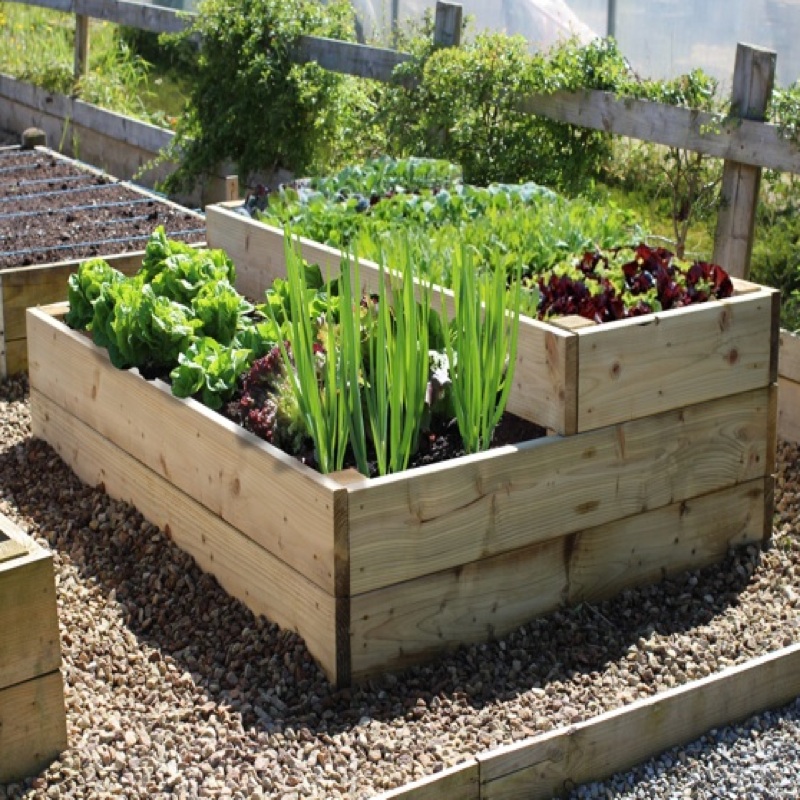Mastering Raised Bed Gardening Methods

Mastering Raised Bed Gardening Methods
Are you ready to take your vegetable gardening to the next level? Raised bed gardening might just be the game-changer you're looking for. This method offers a plethora of benefits, from improved soil drainage to easier pest control. Let's dive into the world of raised bed vegetable gardening methods and explore how you can master this technique.
Why Choose Raised Bed Gardening?
Raised bed gardening is like giving your plants a luxurious penthouse suite instead of a cramped studio apartment. The elevated beds provide better drainage, which is crucial for preventing root rot. Plus, you have complete control over the raised bed soil, ensuring your plants get the best nutrients.
Getting Started: Raised Bed Design
Before you start planting, you need to design your raised beds. The ideal size is about 4 feet wide and 8 to 12 feet long. This raised bed design allows you to reach all parts of the bed without stepping into it, preventing soil compaction.
Building Your Raised Beds
You can build your raised beds using various materials like wood, metal, or composite. Wood is a popular choice due to its affordability and ease of use. Ensure the wood is untreated to avoid chemical leaching into the soil.
Filling Your Beds: The Perfect Soil Mix
The key to successful raised bed vegetable gardening methods is the soil. Aim for a mix of 60% topsoil, 30% compost, and 10% potting soil. This combination provides excellent drainage and nutrient balance.
Planting Techniques for Raised Beds
Square Foot Gardening
This technique involves dividing your bed into square foot sections and planting different crops in each section. It's a great way to maximize space and grow a variety of vegetables.
Succession Planting
Succession planting is like having a conveyor belt of fresh vegetables. Plant fast-growing crops like radishes and lettuce, then replace them with slower-growing plants once they're harvested.
Companion Planting
Companion planting is like setting up a buddy system for your plants. Certain plants benefit each other when grown together. For example, planting marigolds can deter pests from your tomatoes.
Watering and Mulching
Raised beds can dry out faster than traditional gardens, so consistent watering is crucial. Adding a layer of organic mulch can help retain moisture and suppress weeds.
Pest Control in Raised Beds
One of the advantages of raised bed gardening is better pest control. The elevated beds can deter some pests, but you'll still need to keep an eye out for critters. Using physical barriers and organic pesticides can help keep your garden pest-free.
Urban Vegetable Gardening with Raised Beds
Raised beds are perfect for urban vegetable gardening. They can be placed on patios, rooftops, or even in small backyards. Plus, they're easier to maintain than traditional gardens.
Gardening Techniques for Different Seasons
Spring
Spring is the perfect time to start your raised bed garden. Plant cool-season crops like spinach, lettuce, and peas.
Summer
Summer is all about heat-loving plants like tomatoes, peppers, and cucumbers. Make sure to provide adequate shade and water during hot spells.
Fall
Fall is a great time to plant garlic, onions, and cool-season greens. You can also prepare your beds for the next growing season by adding compost.
Winter
In mild climates, you can grow cold-hardy vegetables like kale, spinach, and carrots. In colder regions, consider using cold frames or row covers to extend your growing season.
Tips for Successful Raised Bed Gardening
Rotate Your Crops
Crop rotation helps prevent disease and maintains soil health. Avoid planting the same family of vegetables in the same spot year after year.
Test Your Soil
Regular soil testing can help you identify any nutrient deficiencies or pH imbalances. Adjust your soil accordingly to ensure optimal plant growth.
Keep It Organic
Using organic gardening techniques can help you grow healthier plants and protect the environment. Avoid synthetic fertilizers and pesticides whenever possible.
Learn More About Raised Bed Gardening
For more in-depth information, check out this comprehensive guide on raised bed gardening. It's packed with tips and techniques to help you master the art of raised bed gardening.
Conclusion
Raised bed vegetable gardening methods offer a world of possibilities for both novice and experienced gardeners. With a little planning and the right techniques, you can grow a thriving garden that provides fresh, delicious vegetables all season long. So, what are you waiting for? Get out there and start building your raised beds!
FAQs
Q: What is the best depth for a raised bed?
A: The ideal depth for a raised bed is at least 12 inches. This provides enough room for most vegetable roots to grow comfortably.
Q: Can I use treated wood for my raised beds?
A: It's best to avoid treated wood as it can leach chemicals into the soil, which can be harmful to your plants and the environment.
Q: How often should I water my raised beds?
A: Watering frequency depends on your climate and the types of plants you're growing. Aim to keep the soil consistently moist but not waterlogged.
Q: What can I do to improve drainage in my raised beds?
A: Adding organic matter like compost can improve drainage. You can also install a layer of gravel at the bottom of your beds to facilitate drainage.
Q: How can I extend my growing season in raised beds?
A: Using cold frames, row covers, or even a small greenhouse can help extend your growing season, allowing you to grow vegetables year-round in many climates.
0 Response to "Mastering Raised Bed Gardening Methods"
Post a Comment